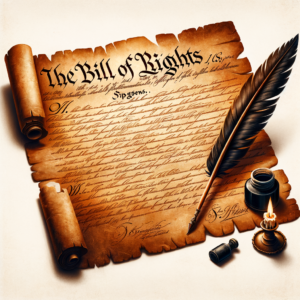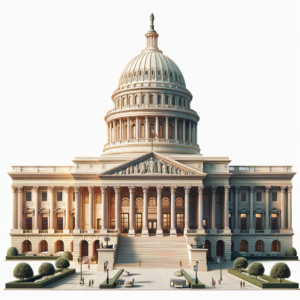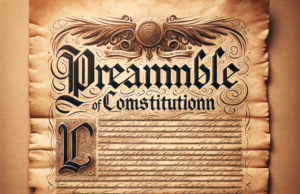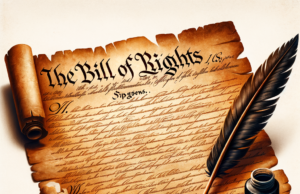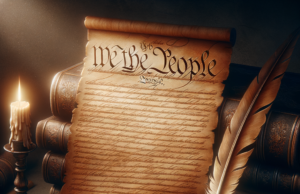Judicial Review: The Hidden Power Shaping Our Democracy’s Future

Judicial review is a fundamental mechanism within democratic governance that empowers courts to assess the constitutionality of legislative and executive actions. This process not only serves as a check on governmental power but also plays a crucial role in safeguarding individual rights and liberties. As societies evolve, the implications of judicial review become increasingly significant, shaping the trajectory of democracy itself. This article delves into the intricacies of judicial review, its historical context, landmark cases, and the challenges it faces in contemporary governance.
Understanding Judicial Review: A Cornerstone of Democratic Governance
Judicial review is the authority of courts to evaluate the actions of the legislative and executive branches of government and determine their compliance with the constitution. This power is essential for maintaining the rule of law and ensuring that no branch of government exceeds its constitutional limits. By providing a mechanism for individuals to challenge government actions, judicial review reinforces the principle of accountability and transparency in governance. It serves as a vital safeguard against potential abuses of power, thus preserving the democratic fabric of society.
The Historical Evolution of Judicial Review in Democratic Societies
The concept of judicial review has its roots in the early legal frameworks of democratic societies, with its most notable articulation found in the United States Supreme Court case Marbury v. Madison (1803). This landmark decision established the precedent for judicial review in the United States, asserting the judiciary’s role in interpreting the Constitution. Over time, various democratic nations have adopted similar principles, adapting them to their unique legal and political contexts. The evolution of judicial review reflects a growing recognition of the judiciary’s role as a guardian of constitutional democracy, influencing governance structures worldwide.
Key Cases That Shaped the Landscape of Judicial Review
Several pivotal cases have significantly influenced the practice of judicial review and its implications for democracy. In the United States, cases such as Brown v. Board of Education (1954) dismantled racial segregation in public schools, showcasing the judiciary’s power to effect social change. Similarly, Roe v. Wade (1973) addressed reproductive rights, illustrating how judicial review can protect individual liberties against governmental encroachment. Internationally, cases like the South African Constitutional Court’s ruling in Minister of Home Affairs v. Fourie (2005) expanded the definition of marriage, demonstrating the global impact of judicial review in promoting equality and justice.
The Role of Judicial Review in Protecting Constitutional Rights
Judicial review plays a critical role in safeguarding constitutional rights by providing a forum for individuals to challenge laws and policies that infringe upon their freedoms. Courts often serve as the last line of defense against governmental overreach, ensuring that fundamental rights, such as freedom of speech, religion, and due process, are upheld. By interpreting constitutional provisions and applying them to contemporary issues, the judiciary not only protects individual rights but also fosters a culture of respect for the rule of law. This protective function is particularly vital in times of political turmoil or social unrest, where the potential for rights violations may be heightened.
Critiques and Challenges Facing Judicial Review Today
Despite its importance, judicial review is not without its critiques and challenges. Detractors argue that judicial review can lead to judicial activism, where judges impose their personal beliefs on the law, undermining democratic processes. Additionally, concerns about the politicization of the judiciary have emerged, particularly in contexts where judicial appointments are influenced by partisan interests. The increasing polarization of political landscapes can also threaten the impartiality of judicial review, raising questions about the legitimacy of court decisions. These challenges necessitate ongoing discourse about the role of the judiciary in a healthy democracy.
The Future of Judicial Review: Implications for Democracy and Governance
As societies continue to evolve, the future of judicial review will play a pivotal role in shaping democratic governance. The increasing complexity of legal issues, coupled with the rapid pace of social change, will require courts to navigate uncharted territories in constitutional interpretation. Moreover, as global challenges such as climate change and technological advancements emerge, the judiciary may be called upon to address new rights and responsibilities. The ongoing dialogue surrounding judicial review will be essential in ensuring that it remains a robust mechanism for upholding democracy and protecting individual rights in an ever-changing world.
In conclusion, judicial review stands as a cornerstone of democratic governance, providing a critical check on governmental power and a safeguard for constitutional rights. Its historical evolution and key cases illustrate its profound impact on society, while contemporary critiques highlight the need for vigilance in maintaining its integrity. As we look to the future, the role of judicial review will undoubtedly continue to evolve, influencing the trajectory of democracy and governance in profound ways. The ongoing commitment to uphold the principles of judicial review will be essential in ensuring that democracy remains resilient and responsive to the needs of its citizens.




